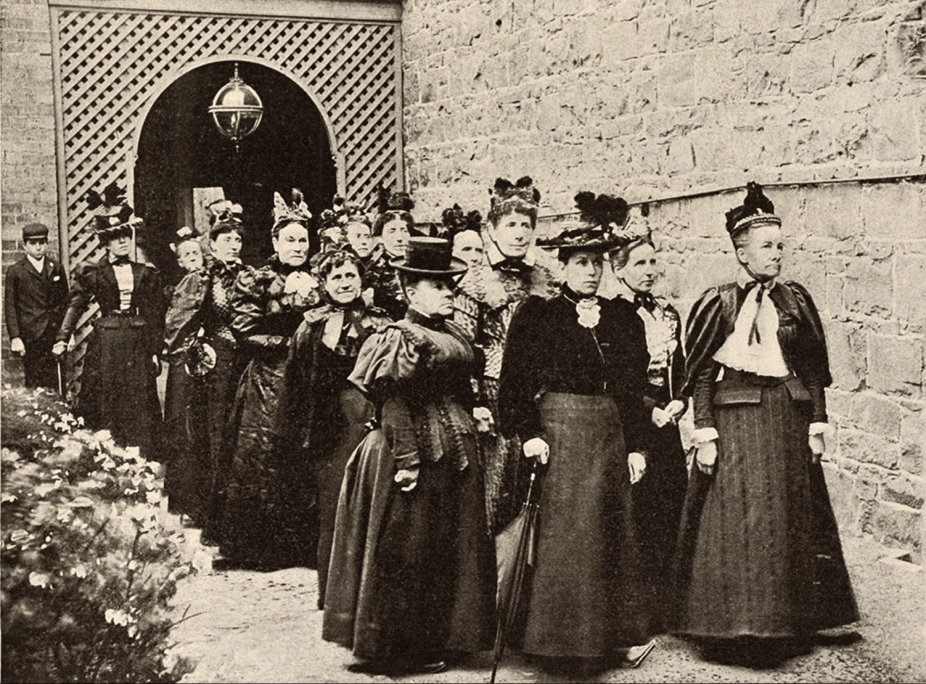The new social movements that coalesced in the 1970s around demands for peace, women’s rights, gay liberation and Indigenous rights transformed Australia’s social landscape completely. It is impossible to understand modern Australia without understanding how those movements upset the social foundations of post-war conservatism.
In the course of writing my new book, What Do We Want? The story of protest in Australia (commissioned and published by the National Library of Australia), I found myself asking which of them has been most successful. The answer soon became clear.
In the 1960s homosexuality was widely viewed with revulsion. If the secret life of a gay man were betrayed he faced ridicule, ostracism, dismissal, violence and even prison. Then, the idea that gay police officers would march in the Mardi Gras (as they did from 1998), that our finance minister would be a lesbian, or that the Army would, officially at least, welcome a transsexual officer would have been outlandish.
Perhaps no group of activists deserves more respect for their courage than those who from 1970 came out to face such a hostile world.
Of course we can point to unfinished business, like equal marriage, although some gay and lesbian campaigners lament this final, if inevitable, act of normalization and the demise of the uniqueness of gay identity. And homophobia in sport remains deep-rooted, despite great leaps forward. It is easier to imagine a gay prime minister than a gay captain of the Australian cricket team.
Decoupling
One of the consequences of the remarkable success of the new social movements has been the decoupling of social change from economic change, superstructure from base. If the new social movements transformed Australian culture and society so completely, in the realm of economics and politics the battle has been won decisively by the other side.
The wealthy are more powerful now. Big corporations have greater influence over government. Unions are largely a spent force. Under pressure from the ratings agencies, the welfare state is under constant attack from those bent on “responsible economic management”. Calls for solidarity now feel like relics of the past.

Stand with Jonathan.
If the left won the cultural battle and the right won the economic battle, the two were not unconnected. It turned out that the market could effortlessly accommodate demands for liberation, as long as they were demands for personal freedoms rather than threats to the economic structure. Indeed, women’s empowerment, gay liberation and the multicultural opening invigorated the market, injecting new sources of creativity, skilled labour and purchasing power into the economy.
Only environmentalism, at least in its more radical forms, truly challenged the structure of economic power. It has won a series of important victories against fierce corporate resistance, and has faced unrelenting attacks from defenders of the system. (Recently, Dennis Shanahan at the Australian has been hyper-ventilating over leaked documents, courtesy of Julian Assange, showing US philanthropic trusts helping to fund the campaign against coal mining in the Galilee Basin.)
Today environmentalism faces its supreme challenge, climate change. Its limited success reflects the massive power of the fossil fuel industries and their cheerleaders in the media and parliament, although there are signs that it is changing.
Shock is chic
In writing the stories of the protest movements I began to notice how often I wrote that this or that activity triggered “outrage”. Causing outrage in the 1960s and early 1970s was almost too easy. Today, in the era of the politics of identity transgression is mostly confected, like a parody of the 1960s, valued for its own sake and shorn of its power, the more so after the marketers co-opted it as a means of investing a product with cool.
Throughout the tumultuous era of protest a silent revolution was taking place. While demanding autonomy, dignity and universal rights, the new social movements of the 1960s and 1970s also transformed how the individual in modern society was conceived. Instead of a person shaped by their social conditions, the emphasis was increasingly on individual autonomy and the creation of self.
Do-it-yourself protest, in which self-expression superseded belonging, became more attractive. Protests had always been part performance, explicitly so in the case of street theatre. But now it became an opportunity for display. After a phase in which it was daggy, protesting had become chic.
Forty years after the peak of protest the lessons are forgotten and the achievements devalued, perhaps most strikingly by right-wing female and gay commentators who attack the activists whose courage and commitment brought the social changes that they have surfed to their positions of influence. Churlish towards their sisters and brothers, they attribute their success to their own superior talents and determination. For them, ego obscures the history that made them.
Clive Hamilton will be discussing his new book with David McKnight at Gleebooks in Sydney at 6 pm on Thursday November 24.
This article was originally published on The Conversation. Read the original article.



 Michael Gove’s extremism definition: four things about his announcement that make no sense
Michael Gove’s extremism definition: four things about his announcement that make no sense  In France, abortion rights and hijab bans highlight a double standard on women’s rights
In France, abortion rights and hijab bans highlight a double standard on women’s rights  The stakes could not be higher as Canada sets its 2035 emissions target
The stakes could not be higher as Canada sets its 2035 emissions target  China's Commerce Minister to Advocate EV Sector in Europe Amid Subsidy, Tariff Probe
China's Commerce Minister to Advocate EV Sector in Europe Amid Subsidy, Tariff Probe  Is attachment theory actually important for romantic relationships?
Is attachment theory actually important for romantic relationships?  US Finalizes Ban List for Chinese Chipmakers; Boosts Mexico Semiconductor Ties
US Finalizes Ban List for Chinese Chipmakers; Boosts Mexico Semiconductor Ties  Immigrant women suffer financially for taking maternity leave: 4 ways Canada can improve
Immigrant women suffer financially for taking maternity leave: 4 ways Canada can improve  How ‘social financing’ could help fund higher education for under-represented students
How ‘social financing’ could help fund higher education for under-represented students  Finland is the happiest country in the world – but our research suggests the rankings are wealth and status-oriented
Finland is the happiest country in the world – but our research suggests the rankings are wealth and status-oriented  Evangelical bestsellers reveal diverse — and sometimes dangerous — ideas about morality
Evangelical bestsellers reveal diverse — and sometimes dangerous — ideas about morality 
































